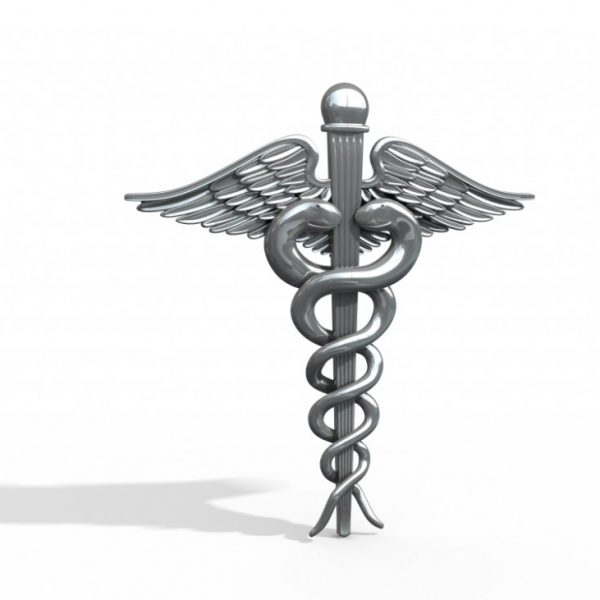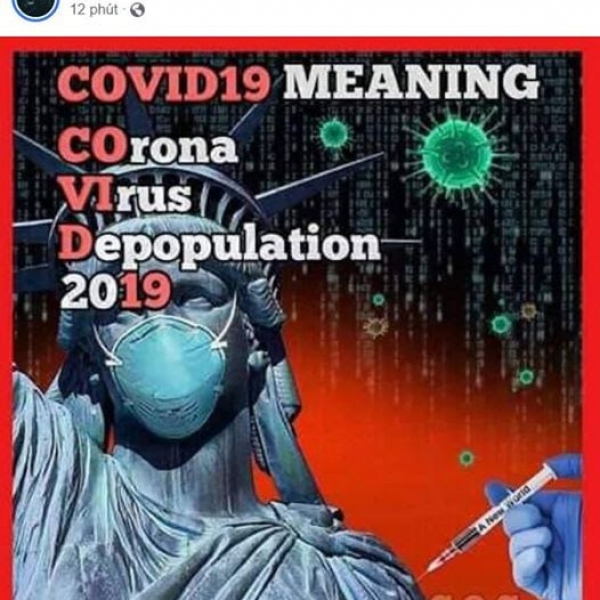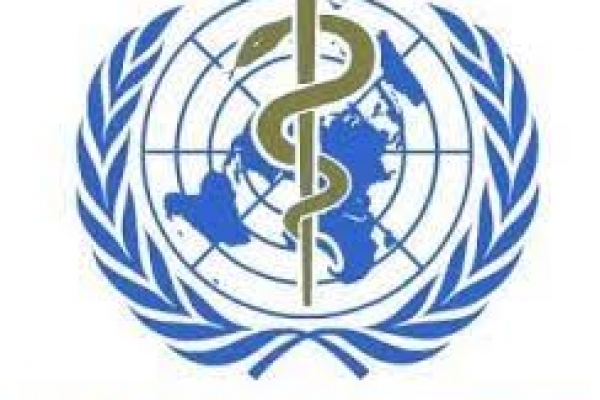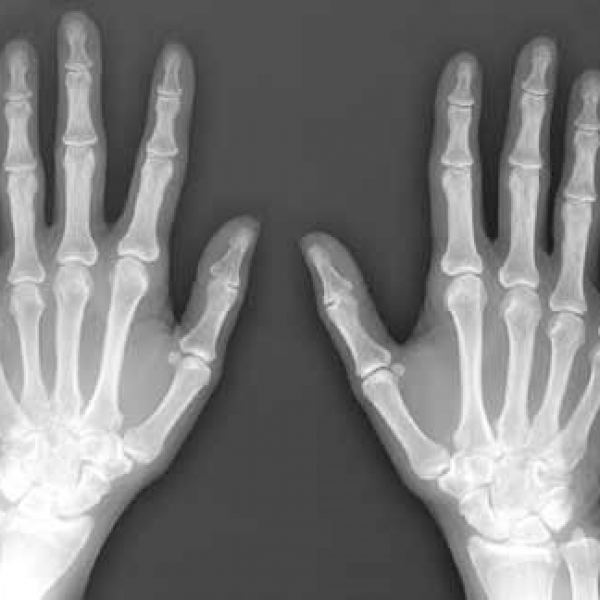Contact Admission
International Collaboration
The history of the development of medicine worldwide and in Vietnam
Medicine is a scientific field of applied knowledge related to the art of healing, encompassing various methods of healthcare aimed at maintaining and restoring the body's health through disease prevention and treatment.
A. History of World Medicine
Until now, many researchers believe that the history of medicine may have originated alongside the history of disease and the history of healers. In the cave of Les Trois Frères (The Cave of Three Brothers), a painting dating back about 17,000 years depicts a hunched figure practicing healing.
Medicine has developed over time and across different regions, at varying speeds depending on the cultural, economic, and societal advancements of each civilization.
There are various ways to analyze the history of world medicine: by region, by time period, or by examining the progression of approaches and research within the field. The latter method is simpler and more straightforward. According to this approach, researchers divide the history of world medicine into four stages:
1- Spiritism Medicine
During ancient Roman times, the ancient Greeks believed that diseases were "divine punishment" and that healing was a "gift from the gods." It was recognized that the mind played an important role in healing and could also be the sole cause of diseases.
In that ancient era, Greco-Roman medicine was heavily influenced by mythology. Whenever someone fell ill, the Romans would fervently pray to deities such as Minerva, Diana, and Hygiea.
In the region of Mesopotamia and Egypt, during the ancient period from around 3500 to 1500 BCE, a rudimentary system of medicine developed. In this primitive medical system, the supernatural was present in all aspects of disease and healing. Diseases and misfortunes were attributed to supernatural agents such as deities and demons. During this period, diagnosis, prevention, and treatment of diseases involved magic, rituals, and prayers. The causes of diseases were believed to be demons, deities, and spirits. Witch doctors, shamans, and priests performed rituals and incantations to "heal" people in the region.
In the Eastern region, there is limited recorded documentation about the development of medicine. The Vedas, written around 1500-1000 BCE in India, provide some insights into the healers, regarded as divine beings, who fought against demons and performed mystical rituals to combat diseases and epidemics. In China, researchers have not found any specific records about the development of medicine during this period. They have only discovered faint traces in folklore and oral traditions.
Spiritual medicine, also known as Shamanistic Medicine, relied on supernatural powers for healing. During this period, it was believed that diseases were a form of punishment from divine beings. When someone fell ill, they sought the assistance of "Mo masters" or "ritual masters" to pray to divine beings for healing.
The history of medicine during this period is poorly documented and vague. Medical advancements during this time occurred in isolated and separate regions. Due to limited information exchange and the absence of formal medical education, progress was limited and inconsistent.
Even today, there are still places in the world where medicine is practiced in this manner, including Vietnam.
Medicine during this period was not highly effective as it relied on superstitions, resulting in limited significant progress. It gradually gave way to a more advanced and effective system of medicine known as Empirical Medicine. This transition took place in different regions, driven by remarkable individuals who emerged independently.
2- Empiric Medicine
During this period, exceptionally skilled physicians emerged in various parts of the world, accumulating their own experiences and incorporating them into diagnosis and treatment, making the therapeutic process more effective. They observed, accumulated experiences, and treated patients based on personal knowledge or transmitted knowledge. This period experienced significant development in the Central-Indian region.
In this stage, medical practitioners relied purely on experience for diagnosis and treatment. They noted that patients with liver pain exhibited yellowish skin. When the skin turned yellow (indicating liver pain), administering Medicine A would provide relief. However, the physicians couldn't explain why liver pain caused yellowing of the skin, or some attempted to provide their own explanations (which may or may not have been accurate). Furthermore, these were personal experiences based on specific cases, making them subjective and prone to errors.
Empirical Medicine has been recognized and documented for a long time in ancient civilizations such as India, Egypt, Greece, and China. (1), (3), (4), (5)
- Ancient Egyptian Medicine: During this period, the pyramids were constructed, taking hundreds of years and employing tens of thousands of slaves. Accidents were common, leading to the development of trauma treatment techniques. In this era, Egyptian medicine organized into specialized departments according to different body parts, such as the Department of Ophthalmology, Department of Traumatology, and Embalming Department. Significant advancements were made during this period.
- Ancient Medicine in the Mesopotamian Region: During this era, people recognized that some diseases were transmitted by mosquitoes. The pharmaceuticals used during this time included garlic, cabbage seeds, bitter melon, sulfur, and toxic plants.
- Ancient Chinese Medicine: Acupuncture was developed and flourished during this period with the emergence of the theories of yin and yang and the five elements. Famous medical works such as the Yellow Emperor's Inner Canon (Huangdi Neijing) and the Shennong's Classic of Materia Medica (Shennong Bencao Jing) were produced. The Inner Canon listed theories and practices of medicine, while the Classic of Materia Medica compiled various medicinal substances, including 365 tonics and remedies for diseases, such as ephedra for treating asthma and mercury for treating skin conditions.
Hoa Da (145-208), was a renowned physician during the late Eastern Han and early Three Kingdoms periods in Chinese history. He was revered as a famous Divine Doctor not only in China but also in culturally related countries such as Vietnam, Japan, and Korea, and is considered one of the founding figures of Traditional Chinese Medicine (TCM). He, along with Dong Feng and Zhang Zhongjing, is honored as the Three Divine Doctors of Kiến An. Biển Thước, a highly esteemed doctor during the Warring States period, is recognized as one of the earliest recorded famous physicians in Chinese historical literature. It is believed that he pioneered the method of pulse diagnosis, laying an important foundation for TCM. Due to his reputation and miraculous stories, Biển Thước, along with Hoa Đà, Trương Trọng Cảnh, and Lý Thời Trân, are collectively referred to as the "Four Great Physicians of Ancient China." His works include "Biển Thước Internal Classic," "Biển Thước External Classic," and "Nạn Kinh" (Classic of Difficulties).

Hoa Da
Acupuncture also began to develop. In the 11th century, Vương Duy Nhất cast bronze statues to carve acupuncture points on them. During the Song Dynasty, starting from the 13th century, the book "Tây Oan lục" emerged as the first book discussing medical techniques. In the 16th century, the Chinese people learned how to inoculate against smallpox.
Ancient Roman and Greek medicine emerged
Claudius Galenus (129–200/217), also known as Galen, was a renowned physician and philosopher of Roman origin with Greek roots. He is considered to be one of the most accomplished medical researchers of the Roman era. His theories and teachings dominated and influenced Western medicine for over a millennium.Galen's explanations of medicine and anatomy were based on his dissections of primates, as human dissections were not permitted during that time. However, his work did not gain much attention until the publication of Andreas Vesalius' detailed descriptions and illustrations of human anatomy in 1543.Galen's explanations of the functions of the heart, arteries, and veins persisted until William Harvey proposed in 1628 that blood circulates through the body with the heart acting as a pump. Even in the 19th century, medical students studied Galen to learn some of his perspectives. Galen conducted experiments involving nerve ligatures to support his theory that the brain controls all movements of muscles related to the peripheral nervous system and skull.
Galien (131-205) made numerous contributions to the research of the muscular, skeletal, joint, and nervous systems.
During the period of experiential medicine, also known as Eastern Medicine or Traditional Chinese Medicine, development took place worldwide, with the strongest advancements occurring in the East, particularly in the Central-Indian region. This era is characterized by a reliance on personal experiences of individual physicians, as medical issues were often not explained by scientific theories. Consequently, the medical knowledge of this period did not adequately meet the practical needs of treating human illnesses and hindered the overall progress of the medical field. As this period occurred during feudal times, the focus of this medical system was primarily to serve kings, aristocrats, and those within the royal court, which limited its development.
Following a prolonged period of economic growth in the East, the region experienced a slowdown, giving way to the industrial and scientific advancements of the West. This shift also influenced the field of medicine, leading to the emergence of scientific medicine, a phase in which medicine was illuminated by the light of scientific knowledge.
3- Scientific Medicine or Experimental Medicine): (1), (2), (3), (4) (6)
- Hyppocrate (460-377 TCN) is regarded as the master of the medical field, and his legacy is inherited by Western medicine, also known as "Tay Y" or Western Medicine. He is considered one of the pioneers of medicine and can be seen as the founder of experimental medicine. Galen is also credited as the first person to establish a medical school and is the author of the Hippocratic Oath (later supplemented by Celsus). He laid the foundation for the development of medical theory. After the fall of the Roman Empire and the beginning of the Middle Ages, the Muslim world continued the tradition of medical knowledge and made significant breakthroughs by translating the works of Hippocrates and Galen into Arabic. Many renowned pioneers in medicine were Arabs, such as Avicenna, known as the "father of modern medicine," Abulcasis, the pioneer of surgery, Avenzoar, the pioneer of experimental surgery, Ibn al-Nafis and Averroes, the pioneers in circulatory physiology, and Rhazes, the founder of pediatrics. Their contributions continued to influence Western medicine into the medieval period.
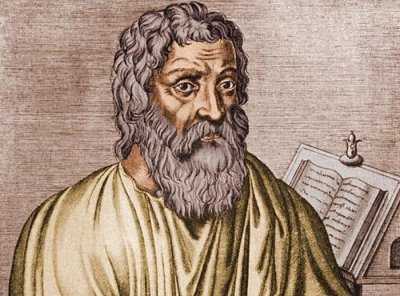
-Hyppocrate
The basic principles and practices of Hippocrates in medicine are as follows:
1. Separation of Religion and Medicine: Hippocrates emphasized the importance of separating religion from medicine and building medicine on material foundations. He based his medical practices on specific observations of disease symptoms. He believed that diseases are natural phenomena of the body and not caused by supernatural forces.
2. Principle of Supporting the Body's Natural Healing Ability: The primary principle of treating diseases according to Hippocrates was to support the body's natural immune response. The focus was on removing any obstacles that hindered the body's self-healing capacity and natural health. Hippocrates advocated a cautious approach to treatment, stating, "Do no harm," even if the physician could not do anything for the patient.
3. Theory of Environment: Hippocrates proposed the theory that human beings do not live in isolation but must comply with the laws of nature. The role of the physician was not to oppose nature but to create favorable conditions for nature and the body to fight against diseases. Hippocrates conducted thorough research on diet and nutrition, outlining specific dietary regimens. He also contributed to the field of hygiene.
4. Disease Knowledge: Hippocrates and his disciples had knowledge of various diseases such as tuberculosis, cancer, anemia, goiter, "green sickness" in women, gallstones, blood clots, epilepsy, paralysis, hysteria, mental disorders, respiratory diseases, digestive disorders, and diseases related to the liver, gallbladder, kidneys, urinary system, reproductive system, bones, skin, ears, nose, and throat, as well as allergies caused by food.
5. Surgical Expertise: Hippocrates was a skilled surgeon and performed operations such as bone setting, joint correction, and treatment of head injuries. He had a wide range of surgical instruments, including scalpels, probes, and spoons.
6. Medications: Hippocrates used various medications for treatment, including opium, toxic drugs, sedatives, sleeping aids, lead salts, acid salts, copper salts, and ointments.
These contributions by Hippocrates laid the foundation for empirical medicine and had a significant impact on the development of medical practices. His holistic approach to medicine, focus on observation, and emphasis on supporting the body's natural healing processes remain influential in modern medicine.
- Claude Bernard (1813-1873) was the founder of experimental medicine and the integration of physiology, pathology, and therapeutics. He conducted research on the sympathetic nervous system, the role of the liver in glucose metabolism, and the function of the pancreas in digestion. In terms of his viewpoint and methods, he wrote: "To know and not to know is the extreme of scientific knowledge." He also emphasized the relationship between the body and the environment.
- Louis Pasteur (1822-1895) was a chemist and the first microbiologist. In 1879, Pasteur isolated and cultured the streptococcus bacteria. Pasteur discovered that rabies was transmitted by a small agent that could not be seen under a microscope, leading to the world's discovery of viruses. As a result, he developed the technique of vaccinating dogs against rabies and treating individuals bitten by rabid animals.
- Davaine (1812-1882) and Rayet (1793-1863) discovered the anthrax bacillus in 1850.
- In 1880, Eberth discovered the typhoid bacillus.
- Robert Koch (1843-1910) discovered the tuberculosis bacillus in 1884.
- Calmette (1863-1933) and Guérin discovered the BCG vaccine for tuberculosis in 1921.
- Louis Pasteur (1822) discovered the streptococcus and pneumococcus in 1890.
- In 1865, Mendel (1822-1884) conducted experiments on plant hybridization.
During this period, physicians conducted scientific research to explain medical phenomena. They were able to answer questions such as why patients with liver disease develop jaundice and how a particular medication treats a disease. Physicians also served as scientists who identified and demonstrated disease-causing agents, the mechanisms of disease, and developed effective medications that targeted physiological changes in diseases, leading to more effective treatments. Building on this foundation, scientists delved deeper into understanding the origins of diseases and developed appropriate treatment methods.
This period, characterized by the strong development of evidence-based medicine, particularly in Western countries, is often referred to as Western medicine or "Tây Y" in Vietnamese.
4- The Modern Era of Medicine: (6), (7), (8)
Modern medicine is a new trend aimed at establishing the most effective diagnostic and treatment protocols through systematic review and meta-analysis methods based on statistics. It has evolved with the progress of modern information science, which enables the collection and analysis of large volumes of data and substantial evidence according to standards. This information is then disseminated to healthcare service providers or disease prevention facilities. One challenge with this "optimized" approach is that it can be seen as a dramatic method, meaning it generates multiple different evaluations. The report by the Cochrane Collaboration in 2001 on this opinion trend indicated that out of 160 Cochrane systematic reviews, based on at least two reviewers, 21.3% had insufficient evidence, 20% were ineffective, and 22.55% had positive evidence. From there, medicine has transitioned into a new phase of development.
- Evidence Based Medicine-EBM): (7), (10), (11).
The concept of Evidence-Based Medicine (EBM) was first mentioned in 1972 by Professor Archie Cochrane in his book "Effectiveness and Efficiency: Random Reflections on Health Services." According to the Evidence-Based Medicine Working Group at the University of Illinois, USA, EBM is an approach to medical practice where clinical physicians are concerned with evidence that supports clinical practice and the value of that evidence.
Medicine is regarded as a science based on evidence, so why do we need evidence-based medicine? The reality is that while medicine is a science, clinical practice is never completely systematic and consistent, as the process of diagnosis, prognosis, and treatment is influenced by many factors, including psychological, cultural, economic, and social aspects. Physicians are not machines; they are human beings who can experience fatigue, stress, frustration, and anger. Additionally, physicians are influenced by the attitudes and behaviors of patients. In terms of cultural factors, aside from local customs, norms, and values, physicians are also influenced by different schools of thought and the opinions of reputable individuals or those in high positions within the practice setting. Economic and social factors also influence the practice of physicians, such as the availability of resources, working conditions, regulations, and the economic status of patients and the physicians themselves.
These factors highlight the complexity of medical practice and the need for an evidence-based approach that integrates the best available evidence with clinical expertise and patient values and preferences. Evidence-based medicine aims to improve the quality and effectiveness of medical practice by incorporating the most up-to-date and reliable evidence into decision-making processes.
Since the development of the internet, there is an overwhelming amount of information available, including medical information. Amongst these information sources, there are valuable ones, less valuable ones, and even misleading or biased information (whether intentional or unintentional). Therefore, it is necessary to establish a filtering system to help sincere researchers select valuable information and filter out distorted, subjective, or fraudulent information for nefarious purposes.
Evidence-Based Medicine (EBM) is defined as a method of medical practice that relies on medical data in a sensible and conscious manner, with the aim of improving the quality of patient care.
Scientific evidence, which is considered authoritative, refers to data published in scientific journals recognized by the scientific community. Currently, in the field of biomedical sciences alone, there are at least 30,000 scientific journals (but only about 10% are listed in the Institute of Scientific Information). With such a vast amount of information, no physician can fully update their knowledge.
Evidence-Based Medicine requires physicians to use medical data in a "sensible and conscious" manner. In other words, it is not just about receiving data; the physician must understand the significance of the data and its reliability, in order to make more objective comparisons and better decisions.
Medical research published in scientific journals is often diverse and presented with unfamiliar nouns and terms. Some commonly encountered research types include meta-analysis, randomized controlled clinical trials (RCTs), prospective (longitudinal) studies, cross-sectional studies, and case-control studies. The scientific value of these studies varies. According to empirical medicine, the following studies are ranked in order of highest to lowest scientific value:
1. Textbook
2. Meta-analysis
3. Randomized controlled clinical trial (RCT), exemplified by the HOPE study
4. Longitudinal studies or prospective studies
5. Cross-sectional studies
6. Case-control studies
7. Case reports
8. Basic research
9. Personal opinions and editorial articles
In other words, working with an evidence-based medicine approach is a continuous learning process based on the problem at hand, rather than being limited to a particular stage, and it spans throughout a person's lifetime.
- Personalized Medicine or Precision Medicine: (8), (9).
In the first decade of the 21st century, remarkable advances in modern genetics, particularly in the field of stem cell research and the mapping of the human genome, have enabled scientists to predict the body's response through the analysis of patients' own genetic makeup. The trend of "personalization" in Western medicine is being awakened, giving rise to an intriguing new model: Precision Medicine.
Precision Medicine, also known as personalized medicine, can be simply understood as treating the patient with the right medication, at the right dose, and at the right time. Broadly speaking, Precision Medicine can be seen as healthcare tailored to the individual characteristics, needs, and preferences of each patient in all stages, including prevention, diagnosis, treatment, and monitoring.
In fact, this idea has its roots in ancient times: Hippocrates, the "father of medicine," once prescribed "that which is for the individual," recognizing that each person is unique and that treatment should be based on the specific characteristics of their illness. Nowadays, modern medicine is also utilizing these principles with strong support from advancements in genetic technology.
Precision Medicine proposes a healthcare model that employs customized approaches, with decisions (diagnosis, prevention, care, treatment) and products (medications, food) designed specifically for each patient based on their genetic information and disease characteristics.
Based on the genetic map of each individual, Precision Medicine utilizes complex and sophisticated diagnostics to develop precise treatment protocols tailored to the molecular-level genetic traits of each person. Currently, Precision Medicine is limited to smaller patient groups for treatment strategies, but as the human genome map becomes fully deciphered, Precision Medicine will become even more refined. At that point, physicians will be able to design healthcare models that are "tailor-fit" and perfect for each patient.
The scientific foundation of Precision Medicine (PM) lies in remarkable achievements in the field of genetic technology, specifically the utilization of data from the Human Genome Project (HGP) and genetic techniques. In 1990, the global collaborative biological project known as the Human Genome Project - HGP was initiated, funded, and managed by the US Department of Energy and the National Institutes of Health. The completion of the Human Genome Project marked the beginning of the era of genomic medicine, with the human genome map being extensively studied and applied in everyday medical practice. Dr. Collins, the Director of the National Human Genome Research Institute in the United States, believes that the human genome map serves as a textbook of medicine, providing countless new approaches to individualized treatment and disease prevention. Understanding the human genome contributes to the development of new diagnostic tools and early detection of diseases such as cancer, diabetes, and high cholesterol. Physicians can identify genetic characteristics of malignant cells, enabling treatment strategies based on genetic mutations. This approach holds the promise of highly effective treatments with minimal side effects. With the knowledge of the genetic sequence, along with modern genetic techniques, it is possible to determine the risk of developing diseases even when the body is healthy. This serves as one of the foundations for the development of Precision Medicine, an essential trend in healthcare.
Thus, the history of global medical development from ancient times to the present has gone through various stages of advancement. The progress of Medicine is influenced by numerous factors such as regional customs, cultural and physiological traits of populations, political systems, historical transformations, economic conditions, and the advancement of science and technology. Some researchers divide the history of medicine based on regions, such as Greek-Roman-Egyptian Medicine, Middle-Eastern Medicine, Traditional Chinese Medicine, and Western Medicine, or based on time periods, such as Ancient Medicine, Medieval Medicine, and Modern Medicine. However, in our perspective, dividing the history of Medicine based on the approach to disease and the direction of treatment, as well as the achievements that the field of Medicine has attained in the effective healing process, bringing life, health, and happiness to individuals, is the most logical and comprehensible approach. According to this perspective, the history of global medical development can be divided into four stages:
1- Spiritism Medicine
2- Empiric Medicine
3- Scientific Medicine or Experimental Medicine
4- The Modern Era of Medicine
a- Evidence Based Medicine
b- Personalized Medicine or Precision Medicine
This accurate assessment will indeed promote the advancement of Medicine at a faster pace, leading to better service for humanity.
2. History of Vietnamese Medicine
In a general sense, healthcare in Vietnam has undergone significant transformations in various aspects, including ideological awareness, organizational structure, operational methods, and development strategies.
Ancient Vietnamese Medicine
Hygiene and disease prevention existed in a rudimentary form, similar to other ethnic communities around the world. Certain customs related to health included hair cutting, body tattooing, wearing constrictive headwear, teeth dyeing, betel nut chewing, etc. In terms of diet, they knew to consume ginger with fish to eliminate fishy odors and aid digestion; they also drank infusions of pandan leaves, pandan blossoms, and green tea for refreshment and digestive purposes.
Vietnamese Traditional Medicine began to exchange knowledge with Chinese medicine. Chinese individuals would often come to Vietnam to obtain medicine, and Vietnamese medicinal plants (such as mulberries, longans, and areca nuts) were also brought back to China for cultivation, leading to the transfer of some medical knowledge. By the 2nd century AD, hundreds of medicinal plants and various treatment methods were discovered and applied. Massage and acupressure techniques were also used for therapeutic purposes.
Vietnamese Medicine in Feudal Society
During this period, Vietnamese medicine did not significantly advance, although some organizations related to healthcare were established. The predominant method of treatment was herbal and traditional medicine. Preventive medicine was not emphasized, with the exception of Lê Hữu Trác, who wrote documents related to hygiene and disease prevention.
- During the Lý dynasty (1010-1026), the Royal Court established the "Ty Thái Y" (Imperial Medical Office). The first medical examination was conducted in 1075 at the Quốc Tử Giám (National University). In the country, there were professional physicians as well as scholar-physicians.
- During the Trần dynasty (1226-1339), the "Ty Thái Y" was elevated to "Viện Thái Y" (Imperial Medical Institute), and medical examinations were held to select medical officials.
- In 1304, Chu Văn An obtained his doctorate and was appointed as the headmaster of the Quốc Tử Giám. Afterwards, he pursued a career in medicine and wrote the book "Y Học Diễn Giải Tập Chú Dịch Biên" (Medical Interpretation, with Annotations and Commentary), which discussed various diseases.
- During the Lê dynasty, Hải Thượng Lãn Ông (real name Lê Hữu Trác, 1720-1791) was a highly knowledgeable and renowned physician and pharmacologist. He wrote the book "Y Tông Tâm Tĩnh" (The Collection of Medical Treatises), consisting of 28 volumes and 66 books. The collection covered topics such as medical ethics, hygiene and disease prevention, diagnosis, and pharmacology. It included various types of medical cases, including internal medicine, surgery, obstetrics, and pediatrics. Lê Hữu Trác emphasized the relationship between the body and the external environment. In terms of ethics, he exemplified the qualities of an exemplary physician, being dedicated and enthusiastic in his interactions with people.
The history of Vietnamese medicine is rich and diverse, with various influences and developments throughout the centuries, shaping the healthcare practices and traditions in the country.
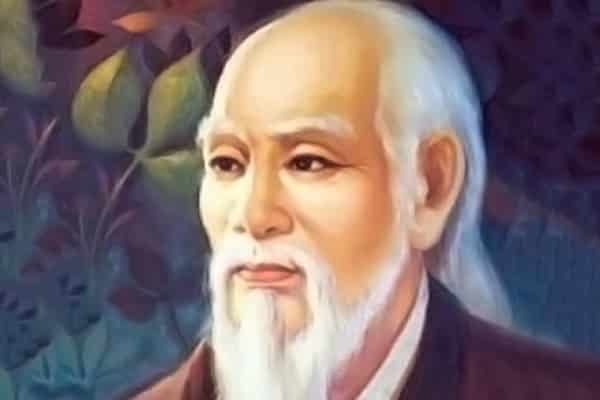
Dr. Le Huu Trac
Medical practices in Vietnam began to change with the arrival of the French in Indochina
When France invaded Indochina, they established a medical agency to oversee and develop the field of medicine in the region. In 1888, France set up the Health Department in Indochina, which included military medicine, hospitals, and health inspection and epidemiology services.
On February 27, 1902, the Governor-General of Indochina, Paul Doumer, established a medical school in Hanoi. The school initially had a library and a 40-bed hospital. The first principal of the school was Alexandre Yersin. The school was called the School of Medical Assistants and offered a three-year training program for indigenous medical assistants. In 1914, it was renamed the School of Pharmacy. The affiliated training hospitals of the school included Bach Mai Hospital, Institute of Anatomy, and Phu Doan Institute (now Viet Duc Hospital).
The French administration paid attention to the health situation in the tropical region and established the Pasteur Institute with branches in Hanoi, Nha Trang, Da Lat, and Ho Chi Minh City. The main focus of the institute was on researching bacteria and producing vaccines for diseases such as smallpox and rabies, marking the initial development of preventive medicine in Vietnam. However, during this period, treatment and disease prevention were not given much emphasis.
As a result, during the French colonial period, there were 51 doctors, 152 medical assistants, 21 university pharmacists, 1,227 nurses, and 215 midwives in Vietnam. Epidemic diseases were also prevalent, with the infant mortality rate ranging from 13% to 20%, the general mortality rate at 2.6%, and the average life expectancy at 32 years.
After the August Revolution in Vietnam, significant developments took place in the field of medicine.
On November 15, 1945, the Hanoi Medical University was inaugurated under the leadership of Professor Ho Dac Di as the first rector, marking a milestone in the development of the healthcare sector. Dr. Ton That Tung became the director of Phu Doan Hospital, while Dr. Pham Ngoc Thach became the first Minister of Health in the Democratic Republic of Vietnam.
At the end of 1953 and the beginning of 1954, the Ministry of Health reorganized its structure, leading to the establishment of the Department of Disease Prevention and Treatment. In 1956, it further divided into the Department of Treatment and the Department of Epidemic Prevention. In 1963, sanitation and epidemic prevention stations were established in communes and wards. The anti-malaria team was formed in 1957 in districts and provinces. The medical field was closely tied to the resistance war, focusing on the living conditions of 90% of the population in epidemic areas. The Ministry of Health established an epidemic prevention committee with the support of the Pasteur Institute, encouraging people to participate in sanitation and disease prevention movements and disseminating relevant knowledge for maintaining good health. The institutes of microbiology continued to produce vaccines against diseases such as smallpox, measles, tetanus, and rabies, ensuring immunization for the entire population in liberated areas.
From 1954 to 1964, the healthcare sector concentrated on developing and improving healthcare in rural areas, addressing issues related to waste management, water, and sanitation. Various types of latrines, wells, and bathrooms were constructed in each household, and two-compartment latrines for waste composting were also implemented, effectively addressing several disease outbreaks.
In 1961, Vietnam successfully produced the Sa bin vaccine for preventing tuberculosis and BCG. This period marked the foundation and significant development of preventive medicine and comprehensive sanitation and disease prevention.
During this period, the surgical field thrived to serve the combat efforts. Pharmaceutical laboratories continued to produce conventional medicines using locally available ingredients, and anesthetics played a significant role in treating war-related injuries. In 1950, for the first time, penicillin vials were produced by the pharmaceutical laboratory of the University of Medicine in North Vietnam, contributing to the resistance war efforts.
Currently, the healthcare sector in Vietnam operates under the principle of diversifying activities and socializing healthcare services, aiming to meet the increasing demands for healthcare with improved quantity and quality. Both the public and private healthcare systems have experienced significant development. The most significant achievement is the establishment of a widespread healthcare network, extending from central to grassroots levels, ensuring that no commune is without healthcare services. The management methods of healthcare services have also undergone changes, including the introduction of partial user fees, the establishment of a health insurance system, and the expansion of private hospitals, clinics, and pharmacies. Attention has also been given to healthcare for the poor.
Preventive medicine has seen remarkable development. On May 15, 2003, the Preventive Medicine and HIV/AIDS Control Department was established through the integration of the Permanent Office of HIV/AIDS Control into the Preventive Medicine Department. Currently, there are 64 preventive healthcare centers, 31 malaria control centers, 13 occupational health and environmental centers, 20 centers for the prevention of communicable diseases, and 7 international epidemic control centers nationwide. By 2000, there were 14 institutes under the preventive healthcare system, including 2 institutes of epidemiology, 2 Pasteur institutes, 2 institutes and one branch institute of Malaria-Parasitology-Insects, the Institute of Occupational Health and Environmental Hygiene, the Institute of Nutrition, the Institute of Public Health, the Vaccine Institute, the Vaccine and Medical Products Testing Center, the Sabin Vaccine Research and Production Center, and 1 Vaccine Company.
The socialization of healthcare has expanded to even the most remote villages. Previously, six infectious diseases topped the list of diseases with the highest mortality rates. However, thanks to extensive vaccination programs, diseases such as polio, neonatal tetanus, diphtheria, and chickenpox have been effectively controlled. Through the administration of 6 types of vaccines produced domestically, significant progress has been made in combating hepatitis B and Japanese encephalitis, as well as programs for the prevention and control of malaria, tuberculosis, iodine deficiency disorders, HIV/AIDS, and leprosy.
Medical examination and treatment services have been continuously developing. To date, there are 876 hospitals, 75 rehabilitation and functional recovery facilities, over 1,000 multi-specialty clinics, and regional maternity homes. The number of hospital beds per 100,000 people has been steadily increasing. Hospital equipment systems are becoming increasingly modern, including MRI machines, CT scans, angiography machines, extracorporeal shockwave lithotripsy machines, and cobalt therapy machines. Advanced medical technologies from around the world, such as organ transplantation, laparoscopic surgery, cardiac surgery, separation of conjoined twins, and in vitro fertilization, have also been applied in Vietnam. Vietnamese scientists have received international medical awards, such as Professor Ton That Tung's method of liver resection using dry cutting, the Kovalexpkaia Award for the Women's Obstetrics Hospital Tu Du, and the Central Institute of Epidemiology's recognition.
Typical examples of Vietnam's health sector
1. Dr. Pham Ngoc Thach: He made significant contributions to the development of the people's healthcare system and played a crucial role in the resistance against the United States. He focused particularly on the treatment and prevention of tuberculosis.
2. Professor Dang Van Ngu: He made significant contributions not only to the healthcare system in Vietnam but also to global healthcare. He discovered new mosquito species such as Anopheles tonkinensis, identified the reverse cycle of the liver fluke, and isolated a type of Penicillium with high antibiotic properties.
3. Professor Ton That Tung: With his scientific research, he introduced a surgical method for liver resection that was recognized and applied by many surgeons worldwide. He also studied the impact of the chemical toxin Dioxin on human health and its consequences for future generations.
4. Dr. Dang Thuy Tram: She represented the spirit of revolution and resistance against the United States, overcoming numerous difficulties to fulfill her duties. As a female healthcare worker during the war, she was in charge of a district hospital, serving in the anti-war effort.
5. Professor Ho Dac Di: He studied medicine in France and developed a surgical method for connecting the stomach and intestines to treat narrowing caused by gastric and intestinal ulcers. This method replaced the previously used stomach removal technique and gained recognition for its value over several decades.
6. Professor Dang Van Chung: He graduated from the Faculty of Medicine in Indochina in 1937 and participated in the resistance war against the French colonialists. Together with Professor Ho Dac Di, he established a Medical School in the mountainous region of Viet Bac. He was recognized for his contributions to internal medicine research and was posthumously awarded the Ho Chi Minh Award in 2000.
These individuals have made significant contributions to the healthcare sector in Vietnam, advancing medical knowledge, and improving the well-being of the population.
Source: https://yhoctonghop.vn/lich-su-y-khoa
Other news
- Home AEDs: High Life-Saving Effectiveness, but Not Cost-Effective at Current Prices ( 14:12 - 18/12/2025 )
- Artificial Intelligence and Pediatric Care ( 08:27 - 16/12/2025 )
- Applying Clinical Licensing Principles to Artificial Intelligence ( 09:36 - 08/12/2025 )
- U.S. Approves Targeted Lung Cancer Therapy Datroway ( 08:43 - 25/06/2025 )
- Therapeutic potential and mechanisms of mesenchymal stem cell-derived exosomes as bioactive materials in tendon–bone healing ( 08:38 - 23/11/2023 )
- Symbol of medicine ( 19:38 - 19/09/2021 )
- Pharmacology in mind ( 08:42 - 04/02/2021 )
- Nitric Oxide and other medical contributions over 2 decades ( 08:19 - 11/12/2020 )
- Scientists Create First Full-Size 3D Printed Human Heart Model ( 09:32 - 10/12/2020 )
- How Many People Need Vaccines to Reach Herd Immunity? ( 09:25 - 10/12/2020 )






